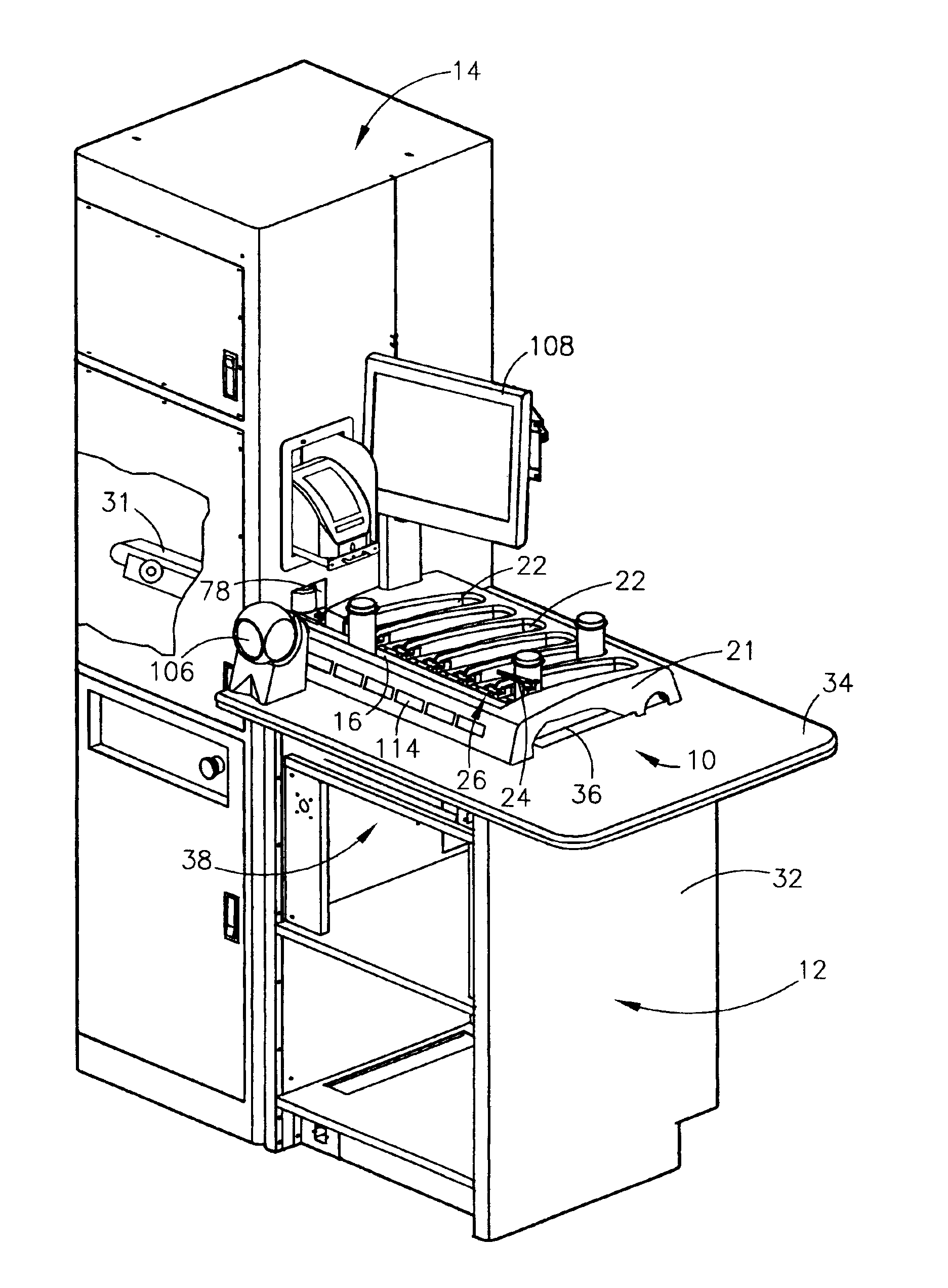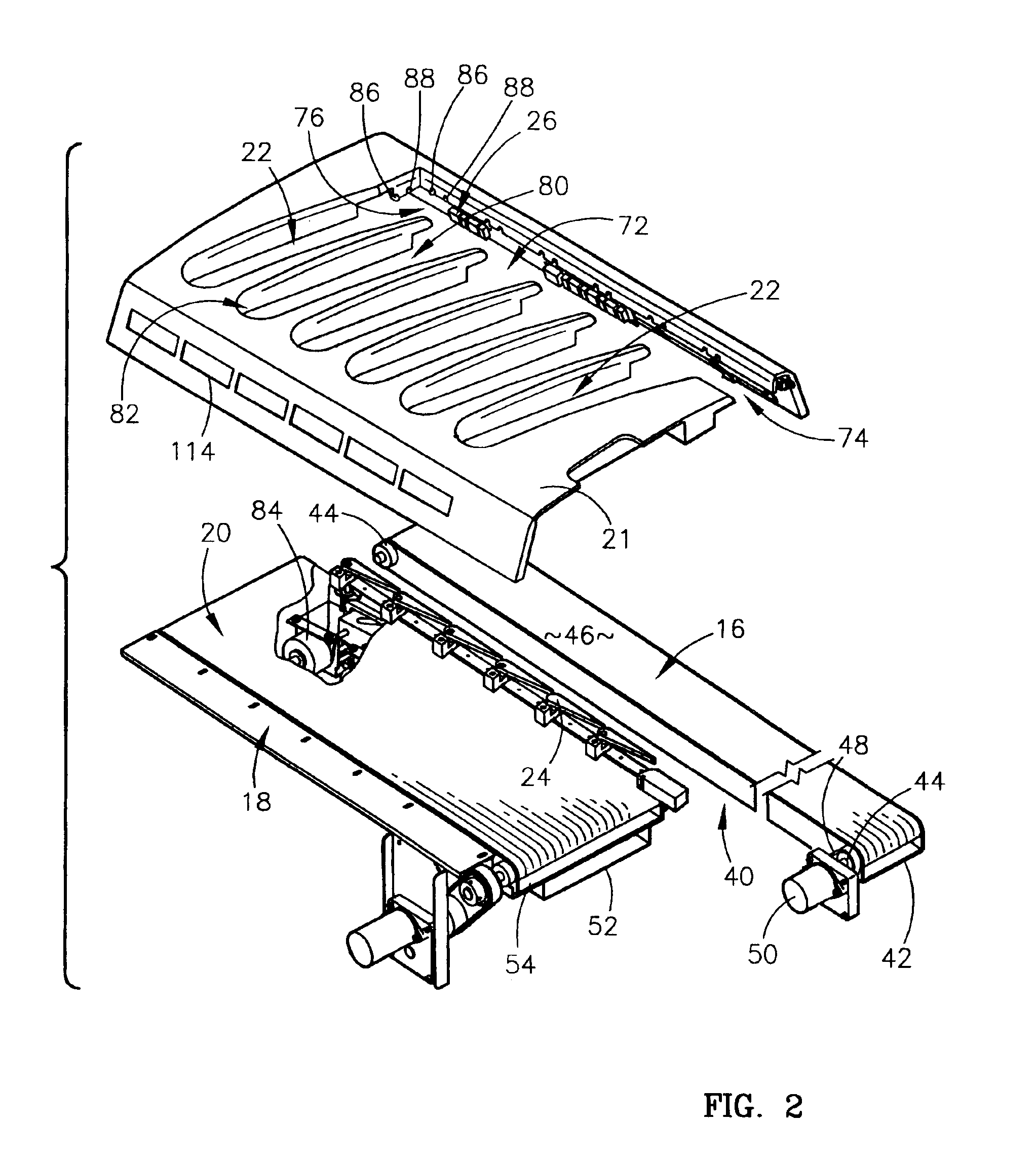Collating unit for use with a control center cooperating with an automatic prescription or pharmaceutical dispensing system
a control center and control unit technology, applied in the field of collating units, can solve the problems of time-consuming and laborious, disorganized containers, and insufficient pharmacists, technicians or other operators, to retrieve and store prescription containers, etc., and achieve the effects of reducing the time necessary, reducing the operating cost of the pharmacy, and being convenient to install
- Summary
- Abstract
- Description
- Claims
- Application Information
AI Technical Summary
Benefits of technology
Problems solved by technology
Method used
Image
Examples
Embodiment Construction
[0046]Turning now to the drawing figures, and particularly FIGS. 1, 2, and 6 a collating unit 10 constructed in accordance with a first preferred embodiment of the invention is illustrated. The collating unit 10 is provided for use with a control center 12 cooperating with an automatic dispensing system (“ADS”) 14. The collating unit 10 is operable to automatically store filled prescription containers, such as prescription vials and unit-of-use packages containing medicaments, exiting the ADS 14 based on an organization scheme that accounts for identifying information of the container, such as a patient name for whom the container is intended or a prescription number of the container.
[0047]The collating unit 10 broadly comprises an infeed conveyor 16 for transporting the prescription containers from the ADS 14 to the collating unit 10; a base 18 housed within the control center 12 and positioned generally adjacent to the infeed conveyor 16; a collating unit conveyor 20 mounted on th...
PUM
 Login to View More
Login to View More Abstract
Description
Claims
Application Information
 Login to View More
Login to View More - R&D
- Intellectual Property
- Life Sciences
- Materials
- Tech Scout
- Unparalleled Data Quality
- Higher Quality Content
- 60% Fewer Hallucinations
Browse by: Latest US Patents, China's latest patents, Technical Efficacy Thesaurus, Application Domain, Technology Topic, Popular Technical Reports.
© 2025 PatSnap. All rights reserved.Legal|Privacy policy|Modern Slavery Act Transparency Statement|Sitemap|About US| Contact US: help@patsnap.com



